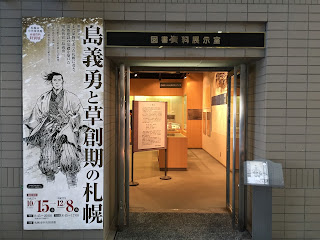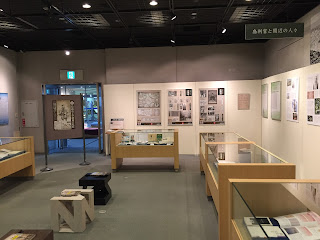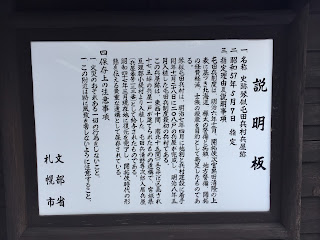握壽司是日本料理的代表菜色,在全世界都可以吃的到。北海道的海產跟本州所產的不同,作為新鮮海膽和鮭魚卵的產地廣為人知。另一方面,在本州多是使用煮過的花枝和蝦子作為壽司材料,但在北海道因為食材新鮮通常是使用生的材料。貝類種類也有點不一樣。特別是在近海的城市,希望大家都能享用北海道的新鮮壽司。
While nigiri sushi is a traditional style of sushi, well known throughout the world, Japan has several types of sushi. The toppings, known as neta in Japanese, for nigiri sushi in Hokkaido are usually different from those in other parts of Japan. Sea urchin and salmon roe produced in Hokkaido are famous for their freshness. Also, people in Hokkaido enjoy eating raw squid and shrimp while in other parts of Japan they are gently boiled. This is also because of their freshness. As for clams, the species are slightly different. Travellers should enjoy Hokkaido's genuine sushi, specially at places near the sea.
* Hokkaido Travel Tips的部落格
收集並保存0圓觀光景點和部分需付費的必看景點,而且也介紹美食及土特產的情報。
*Hokkaido Travel Tips’ Blog
We compile information on “0 yen tourist spots” and “must-see paid spots with extra benefits” and then keep them in our blog as archives for your convenience. We also introduce the food of Hokkaido and interesting souvenirs to take home.
www.hokkaidotraveltips.com
2017年3月9日木曜日
北狐 / Kitakitsune, or the Ezo red fox
北狐是廣泛地棲息於北半球紅狐的亞種,日本的話只在北海道棲息。體型比本州的狐狸大。從以前就經常作為北海道土產的主題。在北海道不管哪個區域都看得到北狐。然而,請不要隨意餵食人吃的食物給北狐。如果接觸到北狐,一不小心也有感染寄生蟲包蟲病的危險。
Kitakitsune, which translates to Ezo red fox in English, lives only in Hokkaido. It is a subspecies of the red fox which inhabits a large part of the northern hemisphere. The Ezo red fox is bigger than foxes living in other parts of Japan. The Ezo red fox has been drawn or characterized in souvenirs for a long time. In Hokkaido, it is not unusual to see them in mountain areas, and they sometimes turn up in the city. Giving food to them is bad for both humans and the fox. If someone touches the fox or its excrement, they may contract echinococcus disease.
Kitakitsune, which translates to Ezo red fox in English, lives only in Hokkaido. It is a subspecies of the red fox which inhabits a large part of the northern hemisphere. The Ezo red fox is bigger than foxes living in other parts of Japan. The Ezo red fox has been drawn or characterized in souvenirs for a long time. In Hokkaido, it is not unusual to see them in mountain areas, and they sometimes turn up in the city. Giving food to them is bad for both humans and the fox. If someone touches the fox or its excrement, they may contract echinococcus disease.
木頭的Show room(北海道廳) / Ki-no Showroom (Hokkaido Government Building)
北海道廳(位於札幌市中央區)在一樓有稱作「木頭的Show room」的免費休息空間。那裡有放置使用北海道產木材所製作的桌椅。那裡除了有使用由間伐木材所製造的紙杯的自動販賣機,冬天也會放置伐木後的木屑所做的燃料棒為燃料的暖爐。這裡也有展示北海道各式各樣物品的空間。
Hokkaido Government Building (Sapporo City, Chuo-ku) has a place on the first floor where people can take a rest. It is called "Ki-no Showroom". "Ki-no" stands for wood in English. Its purpose is to promote wooden products of Hokkaido. There are chairs and tables made from Hokkaido timber, and a drink vending machine which uses paper cups made of timber from forest thinning. In winter, a heater which uses pellets made of Hokkaido sawdust is in operation. There is also a gallery type facility next to Ki-no Showroom exhibiting various things related to Hokkaido.
Hokkaido Government Building (Sapporo City, Chuo-ku) has a place on the first floor where people can take a rest. It is called "Ki-no Showroom". "Ki-no" stands for wood in English. Its purpose is to promote wooden products of Hokkaido. There are chairs and tables made from Hokkaido timber, and a drink vending machine which uses paper cups made of timber from forest thinning. In winter, a heater which uses pellets made of Hokkaido sawdust is in operation. There is also a gallery type facility next to Ki-no Showroom exhibiting various things related to Hokkaido.
蝦夷棕熊 / Ezo Higuma, or the Hokkaido Brown Bear
蝦夷棕熊是日本原生哺乳類動物當中體型最大的生物。蝦夷是北海道的古稱,在日本只有北海道有蝦夷棕熊棲息在這裡。特別是在道東地區,公路上也曾目擊過棕熊。雖說熊會冬眠但是棕熊的活動期間是從春天到冬季初期。要步行前往山區攜帶驅熊鈴是必須的。萬一不小心遇到了熊,千萬別刺激熊慢慢地往回走,如果逃跑的話熊反而會追上來。
Ezo Higuma, or the Hokkaido Brown Bear in English, is the biggest mammal in Japan. This name is commonly shortened to Higuma. Ezo is the old name of Hokkaido and this bear can only be found in Hokkaido. They can be seen in all parts of Hokkaido but Eastern Hokkaido in particular is famous for bears. Sometimes, they're seen near roads there. They hibernate during winter; while they are active the rest of the year. When walking in the deep forest, a special bell is necessary to avoid meeting a Higuma. In the case of coming across one, retreating slowly is the best way. If you try running away, they will chase you.
Ezo Higuma, or the Hokkaido Brown Bear in English, is the biggest mammal in Japan. This name is commonly shortened to Higuma. Ezo is the old name of Hokkaido and this bear can only be found in Hokkaido. They can be seen in all parts of Hokkaido but Eastern Hokkaido in particular is famous for bears. Sometimes, they're seen near roads there. They hibernate during winter; while they are active the rest of the year. When walking in the deep forest, a special bell is necessary to avoid meeting a Higuma. In the case of coming across one, retreating slowly is the best way. If you try running away, they will chase you.
札幌市出土文物中心的圖書資料展示室 / The book and paper-based historical materials exhibition room of Sapporo Buried Cultural Properties Center
札幌市出土文物中心的圖書資料展示室(札幌市中央區)位在札幌市中央圖書館的一樓。展示著札幌以及北海道的歷史資料(近代的重要書籍和文獻)。主要是作為限定期限的特別企劃展來展出貴重的資料。位於此房間隔壁是常設的出土文物展覽室,可以同時參觀。
The book and paper-based historical materials exhibition room of Sapporo Buried Cultural Properties Center (Sapporo City, Chuo-ku) is in Sapporo Municipal Central Library. Here, important material related to the history of both Sapporo and Hokkaido are shown; all on temporary exhibition. Most of the exhibition articles are old maps, letters written by historically important people and books. Next to this room, there is a permanent exhibition room. It displays archeological information about ancient houses and grave sites, as well as tools which include earthenware and stone implements excavated in Sapporo. It is possible to visit both rooms without ticket.
The book and paper-based historical materials exhibition room of Sapporo Buried Cultural Properties Center (Sapporo City, Chuo-ku) is in Sapporo Municipal Central Library. Here, important material related to the history of both Sapporo and Hokkaido are shown; all on temporary exhibition. Most of the exhibition articles are old maps, letters written by historically important people and books. Next to this room, there is a permanent exhibition room. It displays archeological information about ancient houses and grave sites, as well as tools which include earthenware and stone implements excavated in Sapporo. It is possible to visit both rooms without ticket.
2月中旬的札幌 / In Sapporo in the middle of February
2月中旬的札幌,一日當中最低氣溫與最高氣溫的溫差很大。最低氣溫大概是在-3~-10度。最高氣溫在寒冷的日子為-3度左右。碰到溫暖的日子雪會融化,人行步道也會變的濕漉漉的。近幾年在札幌雪祭期間也出現過雪雕或冰雕因氣溫過高融化。
In Sapporo in the middle of February, the lowest and highest temperature vary daily. The lowest temperature can be minus 3 to 10 degrees. It is about minus 3 degrees on a cold day, but 3 degrees on a warm day. As a result, snow sometimes melts in the warm weather; and it is not easy to walk on the ground in the city. If a warm day comes during the Sapporo Snow Festival, snow or ice sculptures can melt. In recent years, unfortunately, this has been the case.
In Sapporo in the middle of February, the lowest and highest temperature vary daily. The lowest temperature can be minus 3 to 10 degrees. It is about minus 3 degrees on a cold day, but 3 degrees on a warm day. As a result, snow sometimes melts in the warm weather; and it is not easy to walk on the ground in the city. If a warm day comes during the Sapporo Snow Festival, snow or ice sculptures can melt. In recent years, unfortunately, this has been the case.
ラベル:
Weather and Clothing,
氣候與穿著
地下鐵大通站地下廣場 / Chika Hiroba
地下鐵大通站地下廣場(札幌市中央區)位在Chikaho(札幌站前大道地下步行空間)和Pole Town (連結大通和薄野之間的地下街)之間。因為位在大通站的中央大廳所以很容易找到。這裡設置有很多長椅,非常適合當作逛街途中的休息場所。附近也有便利商店因此十分方便。記得使用過後要將垃圾帶走。
Chika Hiroba (Sapporo City, Chuo-ku), which literally means "underground square" in English, is located above Subway Odori Station between Chikaho and Pole Town. Chikaho is an underground walkway connecting Odori and Sapporo Stations, and Pole Town is an underground shopping arcade between Odori and Susukino. Chika Hiroba has many seats for people to sit down and take a rest. This is especially good for tourists who don't have time to relax in a coffee shop or such while exploring the central area of Sapporo. There is also a convenience store near Chika Hiroba. Please dispose of your cans or plastic bottles after drinking or take them with you.
Chika Hiroba (Sapporo City, Chuo-ku), which literally means "underground square" in English, is located above Subway Odori Station between Chikaho and Pole Town. Chikaho is an underground walkway connecting Odori and Sapporo Stations, and Pole Town is an underground shopping arcade between Odori and Susukino. Chika Hiroba has many seats for people to sit down and take a rest. This is especially good for tourists who don't have time to relax in a coffee shop or such while exploring the central area of Sapporo. There is also a convenience store near Chika Hiroba. Please dispose of your cans or plastic bottles after drinking or take them with you.
琴似屯田兵村士兵小屋遺跡(琴似屯田兵村兵屋跡) / Kotoni Tondenhei Village Site and Barracks
琴似屯田兵村士兵小屋遺跡(位於札幌市西區)雖然是很小的一個房子但被登錄在日本國家指定史跡當中。屯田兵是指在1874年時政府下令派到北海道來開拓的士兵,最初的開墾地就在琴似。從地下鐵琴似車站一號出口步行約3分鐘的地點保留了一間典型的小屋。當時總共有208間小屋並排地建築在這裡。
Kotoni Tondenhei Village Site and Barracks (Sapporo City Nishi-ku), which was important in Hokkaido's history, was designated as a historical site by the national government of Japan in 1982. Tondenhei were soldiers sent to Hokkaido by the government in late 19th century. Tondenhei had a command to cultivate the land and guard it. The first group of Tondenhei arrived at Kotoni in 1874, and they built 208 houses there. One of them is preserved on its original site near Kotoni Station on Subway Tozai Line, three minutes from Exit 1 on foot. Incidentally, three Tondenhei villages in total were established in Hokkaido.
Kotoni Tondenhei Village Site and Barracks (Sapporo City Nishi-ku), which was important in Hokkaido's history, was designated as a historical site by the national government of Japan in 1982. Tondenhei were soldiers sent to Hokkaido by the government in late 19th century. Tondenhei had a command to cultivate the land and guard it. The first group of Tondenhei arrived at Kotoni in 1874, and they built 208 houses there. One of them is preserved on its original site near Kotoni Station on Subway Tozai Line, three minutes from Exit 1 on foot. Incidentally, three Tondenhei villages in total were established in Hokkaido.
Anniversary Sky Terrace at Sapporo TV Tower
“Anniversary Sky Terrace”
2月6日~12日配合札幌雪祭,札幌電視塔開放三樓屋頂入場參觀。這是紀念在2017年迎接創業130年的北海道新聞社和迎接開幕60週年的電視塔的特別企劃。可以瞭望夜晚札幌雪祭的夜景。入場費用為附上香檳或是熱紅酒一 杯是1500日幣,附上柳橙汁或是烏龍茶一杯為700日幣。
‘Anniversary Sky Terrace’ is a special event of Sapporo TV Tower held between February 6th and 12th, coinciding with the Sapporo Snow Festival. This open-air terrace is on the rooftop of the tower's third floor. This is a collaborative event celebrating Hokkaido Shimbun Newspaper's 130th, and the TV Tower's 60th anniversary. On this terrace, visitors can enjoy an unusual view. At night, guests can see illuminated snow or ice sculptures. There are two types of admission - 1,500 yen for entrance and a glass of champagne or hot wine, or 700 yen for entrance and a glass of orange juice or oolong tea.
大通資訊站 / Odori Information Station
大通信息站除了觀光資訊以外也提供音樂和戲劇表演等文化活動的資訊。地點位在從地下鐵札幌站延伸到札幌地下街大通方向出入口附近。除了有札幌市的多國語言地圖(英語、中文繁體字、中文簡體字、韓語、泰語)可免費拿取之外,也有放置雪祭等官方製作的手冊。
Odori Information Station delivers not only tourism information but also cultural event information related to music and stage performances such as plays. The information station is located near the entrance of Sapporo Ekimae-dori Underground Walkway, which connects Sapporo and Odori subway stations. They have free maps for tourists in many languages, including English, Traditional Chinese, Simplified Chinese, Korean and Thai. Of course, they provide the multilingual edition of the official pamphlet of Sapporo Snow Festival. Incidentally, Sapporo has a big concert hall catering especially for instrumental music. Tourists can get information about shows there.
Odori Information Station delivers not only tourism information but also cultural event information related to music and stage performances such as plays. The information station is located near the entrance of Sapporo Ekimae-dori Underground Walkway, which connects Sapporo and Odori subway stations. They have free maps for tourists in many languages, including English, Traditional Chinese, Simplified Chinese, Korean and Thai. Of course, they provide the multilingual edition of the official pamphlet of Sapporo Snow Festival. Incidentally, Sapporo has a big concert hall catering especially for instrumental music. Tourists can get information about shows there.
Cafe Norte Sapporo
Cafe Norte Sapporo 位於JR札幌站的一樓西側。位在觀光諮詢中心旁邊所以很容易找到。看起來有點像美食廣場,特徵是菜單上使用北海道產的食材。有飯糰、咖喱飯、優酪乳、果汁、牛奶,霜淇淋等菜色。推薦飯糰、小菜和湯品的套餐(620日圓)。
Cafe Norte Sapporo (Sapporo City, Kita-ku) is a popular cafe for tourists located in the western part of Sapporo JR Station's shopping mall. As it is next to the tourist information center on the first floor,it is easy to find. The cafe is like a food court, and focuses on ingredients produced in Hokkaido. Snacks and drinks such as rice balls, curry rice, yoghurt drinks, fresh juice, milk, and ice soft cream are popular. Their recommendation is a set of rice balls, side dish and soup, at a cost of 620 yen. They are open from 8:30 to 20:00.
Cafe Norte Sapporo (Sapporo City, Kita-ku) is a popular cafe for tourists located in the western part of Sapporo JR Station's shopping mall. As it is next to the tourist information center on the first floor,it is easy to find. The cafe is like a food court, and focuses on ingredients produced in Hokkaido. Snacks and drinks such as rice balls, curry rice, yoghurt drinks, fresh juice, milk, and ice soft cream are popular. Their recommendation is a set of rice balls, side dish and soup, at a cost of 620 yen. They are open from 8:30 to 20:00.
攀爬電視塔樓梯 / Walking up to the Observation Deck by Stairs
2月6日~12日配合第68屆札幌雪祭,札幌電視塔將舉辦「攀爬電視塔樓梯」活動。有購買札幌電視塔展望台門票的遊客,在10點~15時這段期間可以使用戶外樓梯步行到展望台。往下樓梯最晚可以使用到21點30分。此外,電視塔打燈的外觀也是札幌雪祭期間限定的特別版本。
Sapporo TV Tower is holding a special event between February 6th and 12th, which coincides with the Sapporo Snow Festival. The event is "Walking up to the Observation Deck by Stairs" and is for those who buy tickets to the observation deck. It will be possible to take the stairs up between 10 a.m. and 3 p.m. Also, walking down to the third floor is possible until 9:30 p.m. As well as this event, a special illumination of the tower will take place. There are 453 steps to the 90 meter high observation deck. This offer is dependent on weather conditions, and will be stopped without notice if necessary.
Sapporo TV Tower is holding a special event between February 6th and 12th, which coincides with the Sapporo Snow Festival. The event is "Walking up to the Observation Deck by Stairs" and is for those who buy tickets to the observation deck. It will be possible to take the stairs up between 10 a.m. and 3 p.m. Also, walking down to the third floor is possible until 9:30 p.m. As well as this event, a special illumination of the tower will take place. There are 453 steps to the 90 meter high observation deck. This offer is dependent on weather conditions, and will be stopped without notice if necessary.
登録:
投稿 (Atom)











































